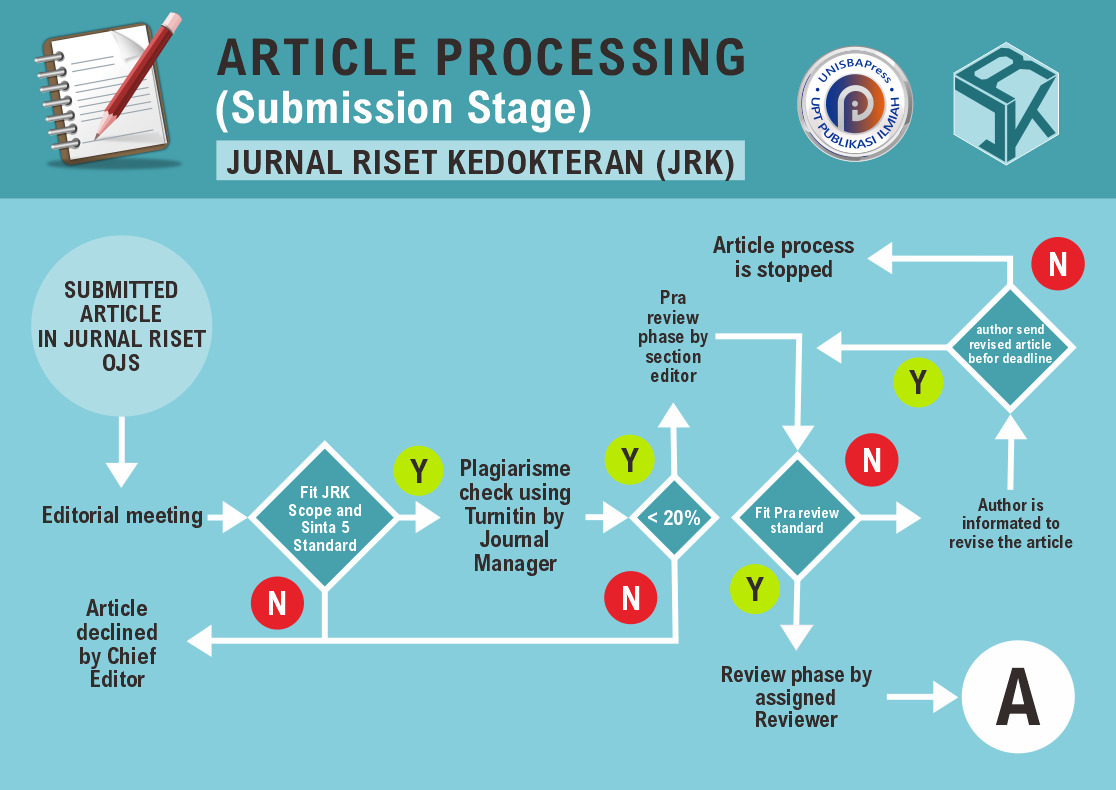Perbandingan Penyembuhan Luka Sayat pada Tikus Wistar Menggunakan Bubuk Kopi dengan Bubuk Kafein
DOI:
https://doi.org/10.29313/jrk.v3i2.3001Keywords:
Kafein, Kopi Robusta, Rattus NovergicusAbstract
Abstract. The content of caffeine and chlorogenic acid in coffee have anti-inflammatory and antioxidant effects that can suppress reactive oxygen species which has the effect of accelerating wound healing in the inflammatory phase. The research was conducted in August. This research is an experimental type research conducted in the laboratory with an in vivo preclinical experimental design that compares the appearance of wound healing in Wistar rats (Rattus novergicus) using robusta coffee powder and caffeine powder. The rats used in this study were about 24 rats. In this study, rats were divided into two coffee and caffeine treatment groups and two positive and negative control groups. In one group consists of 6 rats. The study was conducted for 1 week by assessing the description of wound healing through indicators; 1) dryness of the wound, 2) assessment of the wound edges (hyperemic or not), and 3) wound size. Data were obtained by observing the progress of wound healing in rats. Based on the results of statistical tests using one way ANOVA and Kruskall Wallis, the results showed that there was no significant difference in wound healing in the coffee and caffeine groups. This result is likely due to the influence of several factors such as; bandage sticking, stress, temperature, doses exceeding the LD50, excessive vasodilation, and disease in rats during the study period.
Abstrak. Kandungan kafein, dan asam klorogenat dalam kopi memiliki efek anti-inflamasi dan antioksidan yang dapat menekan dari reactive oxygen species yang efeknya mempercepat penyembuhan luka pada fase inflamasi. Penelitian dilaksanakan bulan Agustus. Penelitan merupakan penelitian jenis eksperimental yang dilakukan di laboratorium dengan rancangan eksperimental preklinik in vivo yang membandingkan gambaran penyembuhan luka sayat pada subjek tikus wistar (Rattus novergicus) dengan menggunakan bubuk kopi robusta dan bubuk kafein. Tikus yang digunakan dalam penelitian ini berjumlah 24 ekor tikus. Dalam penelitian tikus terbagi menjadi dua kelompok perlakuan kopi dan kafein serta dua kelompok kontrol positif dan negatif. Dalam satu kelompok terdiri dari 6 tikus. Penelitian dilakukan selama 1 minggu dengan menilai gambaran penyembuhan luka melalui indikator; 1) kekeringan luka, 2) penilaian tepi luka (hiperemis atau tidak), dan 3) ukuran luas luka. Data diperoleh dengan memantau proses penyembuhan luka pada tikus. Berdasarkan hasil uji statistik menggunakan one way anova dan kruskall wallis di dapatkan hasil tidak ada perbedaan yang signifikan pada penyembuhan luka pada kelompok kopi maupun kelompok kafein. Hasil ini kemungkinan dikarenakan pengaruh dari beberapa faktor seperti; perban menempel, stres, suhu, dosis yang melebihi LD50, vasodilatasi yang berlebih, dan penyakit yang menimpa tikus pada masa penelitian.
References
George SE, Ramalakshmi K, Mohan Rao LJ. A perception on health benefits of coffee. Crit Rev Food Sci Nutr. 2008;48(5):464-486.
Yuwono HS. The new paradigm of wound management using coffee powder. Glob j Surg. 2014;2(2):25–9.
Setyawan Y,Yuwono HS, Andean R. Comparison on Infected Wound Healing Time, Using Coffee Powder and Honey in Wistar Rat. SSRN Electron J. 2018;6(6):1–6.
Hizbullah MD, Yuwono HS, Wardani HP. Hubungan Perbandingan Kecepatan Proses Penyembuhan Luka Menggunakan Ekstrak Air Kopi dan Ekstrak Air Antibiotik Neomisin-Basitrasin terhadap Luka Insisi Terinfeksi Staphylococcus Aureus pada Tikus ( Rattus Novergicus ) In: Prosiding Pendidikan Kedokteran. 2021. :66–70.
Jones VJ. The use of gauze: will it ever change?. Int Wound J. 2006;3(2):79-86.
Guo S, Dipietro LA. Factors affecting wound healing. J Dent Res. 2010;89(3):219-229.
Dos Santos-Silva MA, Trajano ET, Schanuel FS, Monte-Alto-Costa A. Heat delays skin wound healing in mice. Exp Biol Med (Maywood). 2017;242(3):258-266.
Ojeh N, Stojadinovic O, Pastar I, Sawaya A, Yin N, Tomic-Canic M. The effects of caffeine on wound healing. Int Wound J. 2016;13(5):605-613.
1. Adamson RH. The acute lethal dose 50 (LD50) of caffeine in albino rats. Regulatory Toxicology and Pharmacology. 2016 Oct;80:274–6.
Marx JO, Brice AK, Boston RC, Smith AL. Incidence rates of spontaneous disease in laboratory mice used at a large biomedical research institution. J Am Assoc Lab Anim Sci. 2013;52(6):782-791.













